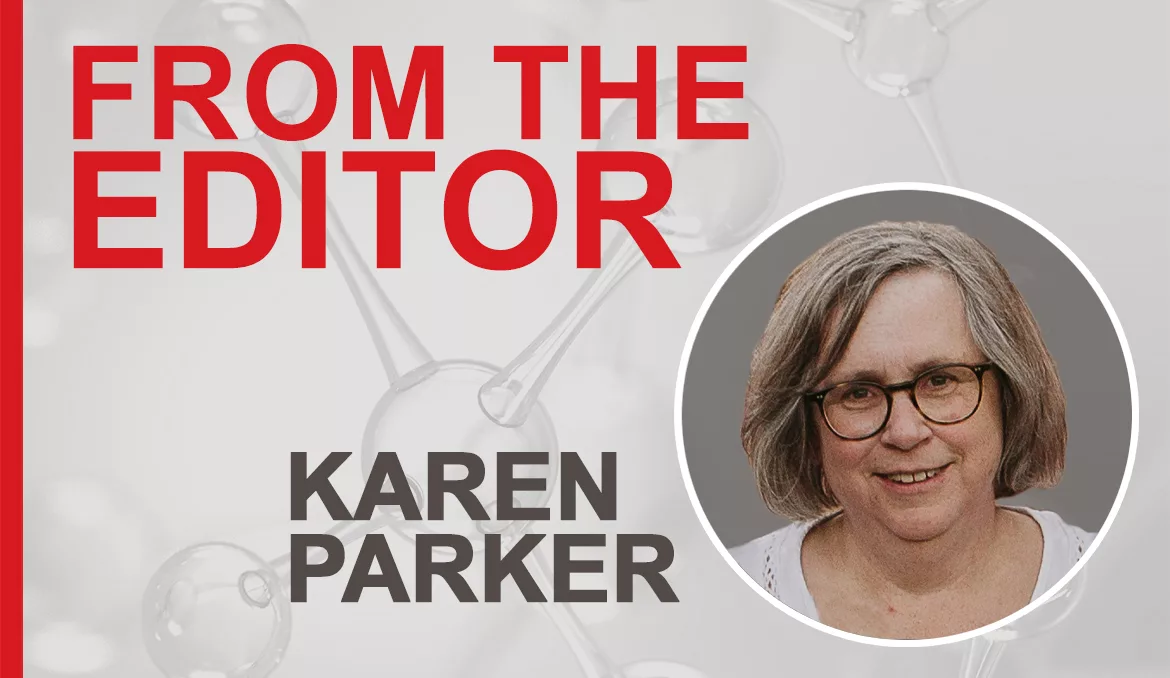From the Editor
Navigating Uncertainty: Business and Human Strategies for 2025 and Beyond

If I were to sum up the general vibe experienced in the world over the last five-plus years in one word, the word I would choose is uncertainty. We are living in a time of significant change and upheaval where it has been difficult to feel solid ground under your feet and know the next step you should take. At the three industry events I attended in April and May, this feeling of uncertainty expressed itself many times as I talked to professionals within the industry.
In SOCMA’s recently released May 2025 Pulse Poll, which surveys both chemical manufacturers and distributors from across the specialty chemicals value chain, 33.8% of respondents listed market uncertainty as the single external factor that is most limiting their ability to grow, invest, or innovate in the present moment. Following the answer of market uncertainty were labor/workforce issues, at 16.9%, followed by regulatory/PFAS/EPA at 12.3%, and tariffs/trade policy at 12.3%.
This anxiety about market uncertainty within the specialty chemicals sector accompanies a market segment that reports plenty of available capacity and an active innovation pipeline. According to the survey report, nearly two-thirds of specialty chemical manufacturers have over 20% of their production capacity available, while only 3% are operating at full capacity. These data indicate the sector currently has a strategic advantage that allows it to respond quickly and flexibly.
When discussing commitment to innovation within the industry, the survey reports that 86% of respondents were actively involved in innovation, either internally or in collaboration with clients. When asked how they would describe their company’s current role in the development and commercialization of new chemistries, whether through in-house innovation or on behalf of your customers, 29% reported they are actively developing and bringing multiple new chemistries to market; 57% responded that they are selectively advancing new chemistries based on clear customer or market pull. Only 14% said they were maintaining their current portfolio with limited new development.
So, within this environment, what did respondents identify as the most critical non-policy factors that would allow them to scale investment, expand production, and accelerate innovation in the next 12-24 months? The answer is essentially, stability. 36% of respondents identified “stronger and reliable customer demand signals” as the most critical non-policy factor. Of the respondents, 16% answered with “stabilized raw material/input costs,” and 27% identified long-term commercial partnerships as the most critical non-policy factor.
In an article by William Reed, editorial assistant at MIT Sloan Management Review, in the April issue of the Sloan Management Review, Reed outlines 10 strategies for successful leadership during uncertain times. Among the strategies are building resilience, avoiding paralysis in decision making and reframing how you see decisions, strengthening your ability to adapt quickly to changing conditions, becoming accustomed to discomfort, realizing and reacting to employees’ need for calm, building a sense of community within your company, establishing a system of regular, authentic communication about the situation, and developing a process of "sensemaking" where you gather diverse perspectives to make sense of complex situations and refine your understanding through testing and iteration. The article links back to additional Sloan papers that explore each of these strategies. I recommend reading the entire text here.
This time in history calls for adaptability and more cooperation within business organizations. I think it also calls for an understanding that this moment of uncertainty and upheaval impacts people, not just businesses. Living in a state of constant uncertainty can increase anxiety responses, impact concentration and productivity, and can lead to states of paralysis in employees within an organization just as it can lead to those same results in the business as a whole. As you read over the list of strategies to lead successfully during uncertain times, perhaps also think about strategies to navigate these uncertain times in your relationships. Try to be more flexible in expectations, strive to find calm for yourself and your coworkers, and build a community. And as you work to develop a process of "sensemaking," perhaps seek out the parts of the natural world that offer more stability: the laws of nature and science that still work with predictability even as the world around us changes.
This issue of ASI focuses on innovation in technologies for pressure-sensitive adhesives – something relatively predictable in an unpredictable world. Among the articles offered this month is the 2024 Carl Dahlquist award-winning paper presented at the Pressure Sensitive Tape Council’s 2024 Tape Week. Additionally, an article from Henkel outlines how biobased adhesive can help label manufacturers achieve their sustainability goals. Also featured in June are articles about how Afera, the European Adhesive Tape Association, is helping adhesive and tape manufacturers gain greater sustainability, and an article from Shurtape that outlines current trends within the adhesive tape industry. Enjoy this issue of ASI and please contact me at parkerk@bnpmedia.com with your comments and questions.
MIT Sloan article: https://sloanreview.mit.edu/article/10-strategies-for-leading-in-uncertain-times/
Looking for a reprint of this article?
From high-res PDFs to custom plaques, order your copy today!






